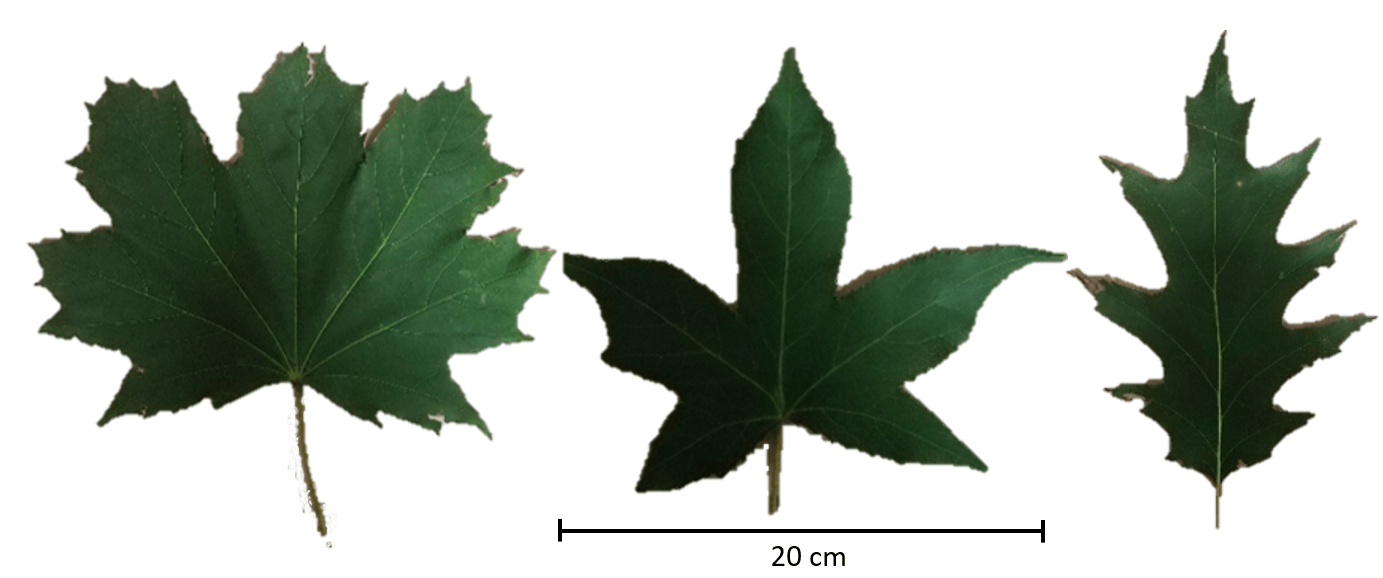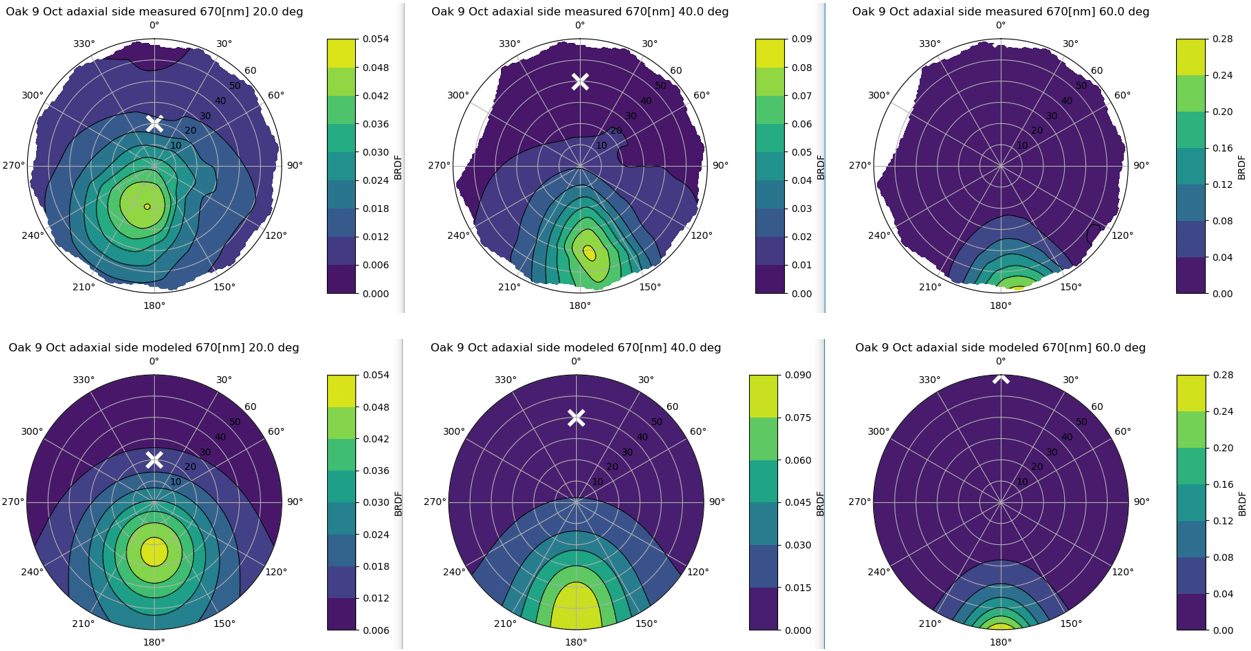Deciduous broad leaf bidirectional scattering distribution function (BSDF)
Principal Investigator(s)
Jan van Aardt
Research Team Members
Benjamin Roth
Project Description
Lidar remote sensing has shown high accuracy/precision for quantification of forest biophysical parameters needed for ecological management. Although the significant effect of Bidirectional Scattering Distribution Functions (BSDF) on remote sensing of vegetation is well known, current forest metrics derived from lidar data seldom take leaf BSDF into account. Despite the importance of BSDF effects, leaf directional scattering measurements are almost nonexistent, particularly for transmission. Previous studies have been limited in spectrum, lacked models to capture all angles beyond measurements, and did not adequately incorporate transmission scattering. Furthermore, many current remote sensing simulations, which are vital to our understanding of lidar data, assume leaves with Lambertian reflectance, opaque leaves, or apply purely specular or Lambertian transmission. The accuracy of these assumptions and the effect on simulation results are currently unknown. This study captured deciduous broadleaf BSDFs from the visible through shortwave infrared spectral regions, accurately modeled the BSDF for extension to any illumination angle, viewing zenith or azimuthal angle.
The goniometer of the Rochester Institute of Technology-2 (GRIT-T) was used to make leaf bi-conical directional reflectance and transmittance measurements. Leaves from three species of large trees, Norway Maple (Acer platanoides), American Sweetgum (Liquidambar styraciflua), and Northern Red Oak (Quercus rubra) were measured (right). Data then were fit through nonlinear regression to physical-based microfacet BSDF models (next page), resulting in normalized root mean square errors less than 15% for reflectance and 30% for transmission, averaged across all wavelengths. Leaf physical parameters, including the index of refraction and a relative physical roughness, were extracted from the microfacet models delineating the three species.
In order to address the lack of knowledge on leaf level BSDF effects on lidar data, the following objectives have been formulated: i) Capture broadleaf BSDF (both reflectance and transmission) spectrally from the visible through shortwave infrared; ii) Generate BSDF models for different leaf types extending to any illumination and viewing zenith or azimuthal angle; iii) Incorporate realistic broadleaf BSDF models into Digital Imaging and Remote Sensing Image Generation (DIRSIG); and iv) Isolate lidar data simulation results due to BSDF effects relative to wavelength, lidar footprint, view angle, and leaf angle distribution (LAD). A paper will be submitted on the leaf BSDF measurements in the near future. In addition, the measurements will be incorporated into DIRSIG lidar simulations. An assessment of BSDF effects on waveform lidar signals and subsequent retrieval of leaf area index (LAI) are planned for the medium-term.

